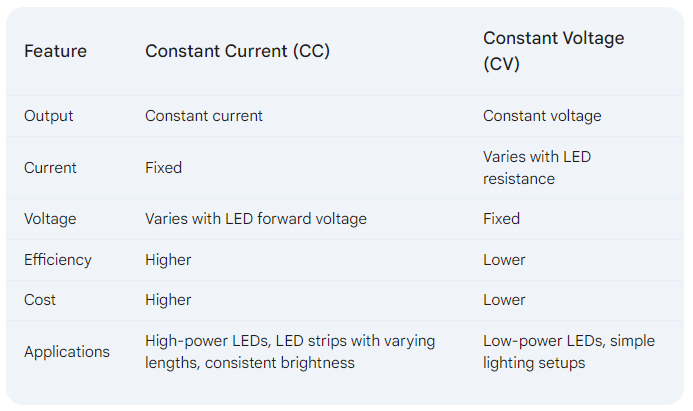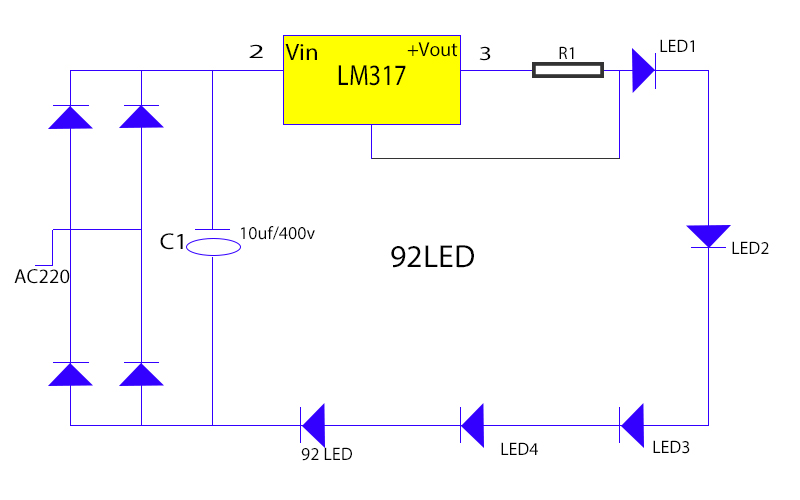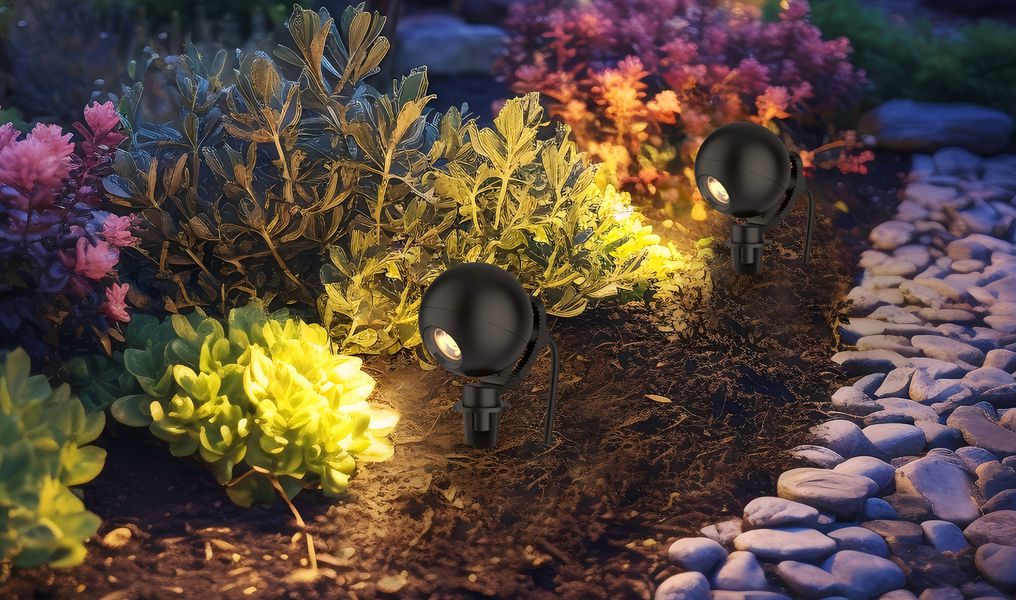There are many types of LED drivers in the markets, but while asking some people which LED driver they would like to choose, constant current LED driver or constant voltage LED driver? Maybe they will confused by them and difficult to think of the differences between them.
- The definition of constant current and constant voltage LED driver.
- Differences between constant voltage and constant current of LED lights
- How can the constant current and constant voltage of an LED driver be distinguished?
- What are their advantages?
- Is the voltage driver good to dim?
- Things you need to consider when choosing the right driver.
- What about UPSHINE LED constant current driver detail?
The definition of constant current and constant voltage LED driver.
Constant current LED driver
Constant current source power supply in the case of allowed load, the output current is constant, does not change with the load, usually used in high-power LED products
Constant voltage LED driver
A constant voltage source power supply is in the allowed load, and the output voltage is constant, and will not change with the load. It is usually used in low-power LED modules, and low-power LED light strips.
Differences between constant voltage and constant current of LED lights
The principles of both kinds of LED drivers are the same for providing a power supply to light sources. The difference is the way they deliver the power:
When the load resistance R remains unchanged, the current I is stable. However, when the load resistance R changes, the current I also changes. In order to keep the output current I constant, the output voltage U provided by the constant current source must also change accordingly. The output voltage U increases with the load resistance R to maintain a constant current output.

Both applications
Constant voltage source power supply is usually used in low-power LED modules, and low-power LED light strips are more common, while constant current source power supply is usually used in high-power LED products.
How can the constant current and constant voltage of an LED driver be distinguished?
Distinguish directly from the indicator parameters printed on the LED power supply
If it is a constant voltage source, its output voltage is usually marked with a fixed value, and the output current is marked with a maximum value.
If it is a constant current source, the output voltage is a range and the output current is a fixed value.
Load testing
If you have access to a power supply and measurement equipment, you can perform a simple test
- Connect a variable resistor to the driver output.
- Gradually increase the resistance.
- A CC driver will maintain a constant current while the voltage increases.
- A CV driver will maintain a constant voltage while the current decreases
What are their advantages?
Constant current LED driver
By preventing excessive current flow, constant current drivers protect LEDs from damage and overheating, ensuring consistent light output. They simplify design processes and produce lights with uniform brightness.
Constant voltage LED driver
Constant voltage technology is more familiar to engineers and often results in lower system costs, especially for large-scale projects.
Is the voltage driver good to dim?
The relationship between constant voltage drivers and dimming is more complex, it is not recommended to apply the voltage driver for dimming, if you attempt to dim an LED with a constant voltage driver, you're essentially reducing the voltage to the LED. This can lead to:
- Inconsistent dimming: The dimming curve might not be linear or smooth.
- Reduced lifespan: Operating LEDs at lower voltages can affect their lifespan.
- Color shift: The color temperature of the LED might change as the voltage decreases.
- Flickering: In some cases, flickering can occur due to insufficient current.
Better Options for Dimming
To achieve smooth, reliable, and efficient dimming of LEDs, it's generally recommended to use:
- Constant current drivers: These drivers maintain a steady current to the LEDs, allowing for precise dimming control.
- Dimmable LED drivers: Specifically designed to handle dimming signals (like 0-10V, PWM, or DALI) and provide consistent light output across the dimming range.
Example
According to U=I*R, because I is constant, the output voltage is proportional to the load. The greater the load impedance, the greater the output voltage. For example, if the output voltage is 3V when one LED is connected in series, then the output voltage is 6V when two are connected in series, 9V when three are connected in series, and so on, until the maximum load capacity of the constant current source.

To conclude, it is easy to distinguish between the constant current LED driver and constant voltage LED driver, while the best quality LED lights are normally equipped with LED constant current driver in real life because they make the lighting fixtures longer lifespan and more stable.
Things you need to consider when choosing the right driver.
When you choose the LED drivers, what details should you consider?
No matter the constant voltage LED driver or constant current LED driver, there are some factors we should consider including output current/voltage, power rating, dimming range, driver features, and standards certifications.
- Output current: Must match the LED load requirements.
- Power rating: This should accommodate the total LED wattage.
- Dimming range: The desired dimming level should be within the driver's capabilities.
- Driver features: Ensure compatibility with required functionalities (e.g., commissioning, scene recall).
- Certifications: Verify compliance with safety and performance standards
What about UPSHINE LED constant current driver detail?
UPSHINE has different types of LED drivers, they are Dali Dimming LED Driver, Smart Wireless LED Driver, 0/1-10V Dimming LED Driver, Triac/Phase-Cut Dimming LED Driver, and Non-dimming LED Driver. Among those, the DALI dimming constant current LED driver is the most popular.
UPSHINE DALI dimming constant current driver is a specialized electronic component that provides a stable, constant current to LED light sources while enabling precise dimming control through the DALI protocol. It is widely used in commercial lighting systems, industrial lighting, and architectural lighting.










